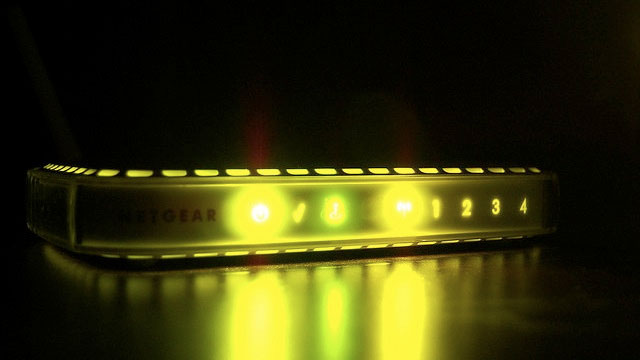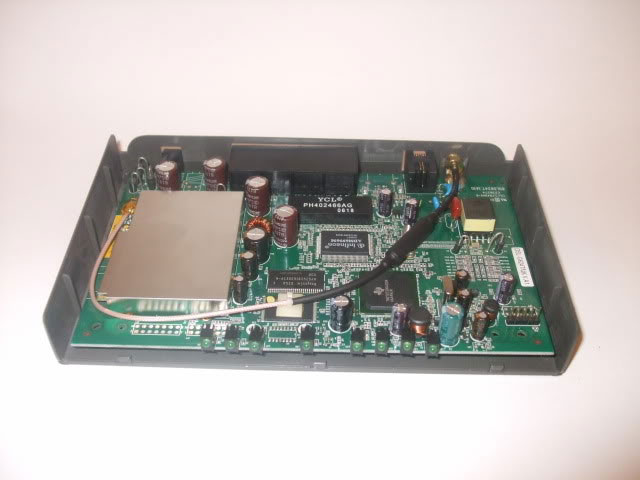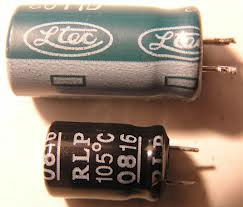Why should the WiFi transmitter be turned off for 10 seconds before restarting?
In the instructions on repairing, debugging or updating new firmware for devices such as wireless routers and modems, we often encounter one step: Unplug the power, wait 10 seconds and plug in the power cord again.

According to Lifehacker technology page, the core of the problem lies in the capacitors in the device. Basically, these capacitors are like energy bags, loaded when there is current flowing and discharging for the rest of the time. The 10-second power outage of the device is enough to cause most types of capacitors to drain their stored energy and deliver electronic components that provide energy to a completely resting state.

If you've ever opened the PC case, you've probably noticed that a small LED on the mainboard usually takes a few seconds to turn off even after you've unplugged it. Or people who often have to use a PC component removal machine are no stranger to using the power button to quickly discharge after unplugging the power, avoiding electric shock when removing.
Depending on the type of device and the type of capacitor on it, the natural discharge time may vary, but on home network devices, the time of 10 seconds is usually more than enough.

For more severe cases, especially with DD-WRT-up routers, many places recommend users to use the 30/30/30 hard reset method of about 8 steps:
1. Remove the signal wires.
2. Hold the reset button 30s.
3. Still holding the reset button, unplug the power cord.
4. Continue to keep reset 30s.
5. Reconnect the power cord.
6. Continue to keep reset for 30 seconds.
7. Release the reset button and start 10 seconds off.
8. Unplug the power cord and continue waiting 10 seconds before plugging in again.
Now everything will return to the factory default state (it is recommended that some sources indicate that this method causes an error for the WRT54GS, WRT320N and Asus RT-N16).
You should read it
- Should use Dongle or portable WiFi transmitter?
- Expand home Wi-Fi network
- Turn your laptop into a Wifi transmitter
- Instructions on how to install and use the wifi transmitter at home
- What is Department of Mobile WiFi?
- Top 6 best WiFi routers, supporting WiFi 6
- The truth behind the tree photo next to the wilted Wifi transmitter on Reddit
- Successfully jailbreak iPhone using Wifi transmitter
May be interested
- Do this once a month, it takes less than 5 seconds to make your home Wifi fast and stable
 sometimes, you feel that your home network is unstable, immediately restarting the router will bring unexpected results, if done regularly, even better.
sometimes, you feel that your home network is unstable, immediately restarting the router will bring unexpected results, if done regularly, even better. - The truth behind the tree photo next to the wilted Wifi transmitter on Reddit
 on the reddit forum recently, there was a photo that made netizens make conflicting comments.
on the reddit forum recently, there was a photo that made netizens make conflicting comments. - Turn your laptop into a Wifi transmitter
 to share the network with other laptops, help other laptops connect to the network without using any wifi transmitter. you can use the laptop directly with your network connection and broadcast wifi.
to share the network with other laptops, help other laptops connect to the network without using any wifi transmitter. you can use the laptop directly with your network connection and broadcast wifi. - 11 best long-range Wifi routers 2018
 consumer wireless routers have many types depending on the wifi broadcast range. routers have a stronger wifi signal that allows devices to connect to higher speeds from larger and easier distances. so which router is the best?
consumer wireless routers have many types depending on the wifi broadcast range. routers have a stronger wifi signal that allows devices to connect to higher speeds from larger and easier distances. so which router is the best? - Which is the best 4G Wifi router today?
 in remote areas, or remote areas without internet infrastructure, using a 4g sim to access the internet is the only solution. and to maintain a stable network speed, a 4g wifi transmitter plugged in is the best option!
in remote areas, or remote areas without internet infrastructure, using a 4g sim to access the internet is the only solution. and to maintain a stable network speed, a 4g wifi transmitter plugged in is the best option! - Top 7 cheap Wifi routers in 2018
 if you are looking for a cheap wifi router, take a look at the following list of 7 best router devices 2018!
if you are looking for a cheap wifi router, take a look at the following list of 7 best router devices 2018! - Successfully jailbreak iPhone using Wifi transmitter
 not long after a startup released a beta version of a project called project sandcastle, which allowed to run android right on iphones, the jailbreak community was recently surprised when someone jailbroken an iphone with a wifi router.
not long after a startup released a beta version of a project called project sandcastle, which allowed to run android right on iphones, the jailbreak community was recently surprised when someone jailbroken an iphone with a wifi router. - Repeat Wifi Wifi - Receive Wifi source and playback
 in addition to the default wifi broadcasting feature, tp-link wifi modem also has a repeater feature that 'captures wifi signal from another wifi transmitter and then replays'.
in addition to the default wifi broadcasting feature, tp-link wifi modem also has a repeater feature that 'captures wifi signal from another wifi transmitter and then replays'. - Laptop disconnects from wifi when screen is turned off, effective solution
 hello! if you are frustrated because your laptop is disconnected from wifi when the screen is turned off. then tipsmake will give detailed instructions
hello! if you are frustrated because your laptop is disconnected from wifi when the screen is turned off. then tipsmake will give detailed instructions - Summary of the best Wi-Fi Router devices
 whether computers can catch wi-fi is stable and good depends a lot on wi-fi transmitters. the transmitter has quality, the signal transmission speed is guaranteed.
whether computers can catch wi-fi is stable and good depends a lot on wi-fi transmitters. the transmitter has quality, the signal transmission speed is guaranteed.










 Causes that SD memory cards work 'sluggish'
Causes that SD memory cards work 'sluggish' Do you really need to 'defrag' computers?
Do you really need to 'defrag' computers? 4 ways to identify computers running Windows 64 bit
4 ways to identify computers running Windows 64 bit 6 ways to help you quickly get acquainted with a new operating system
6 ways to help you quickly get acquainted with a new operating system 10 useful commands in Windows you should know
10 useful commands in Windows you should know How do computers 'talk' on the Internet?
How do computers 'talk' on the Internet?